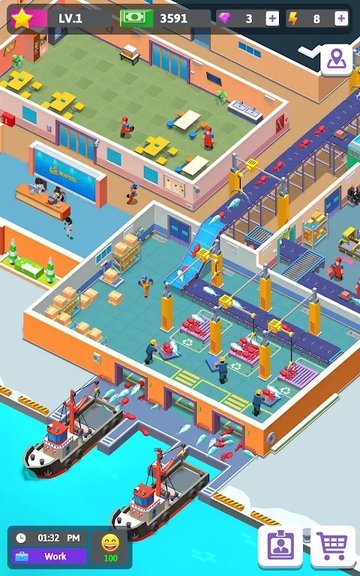Idle Seafood Tycoon is a seafood business simulation game in which the player takes on the role of an aspiring entrepreneur who takes over a small seafood factory and gradually becomes a seafood industry tycoon by running and expanding the business.
At the beginning of the game, the player will face a humble fishing port, with only a small boat and some simple equipment. Players need to engage in basic fishing and processing activities, transporting the caught seafood back to the port and making them into fish, shellfish, shrimp and crab products through a simple processing process, and then selling them to the market.
As the business grows, players can gradually expand the scale of production by purchasing more fishing boats, upgrading port facilities, hiring more employees, and developing new products, including more advanced seafood products such as canned seafood, frozen seafood, etc., thus continuously increasing the added value and profitability of the products.
In addition to the production side, players also need to pay attention to market demand and price fluctuations. Different seafood products have different prices and sales trends in the market. Players need to flexibly adjust their production plans and allocate resources reasonably to respond to changes in market demand and gain maximum profit.
As the business expands, players can also consider marketing and brand promotion, including organizing seafood festivals, participating in exhibitions, and establishing partnerships with restaurants and supermarkets, in order to expand market share, increase brand awareness, and further drive business growth.
In addition to daily operations, players also need to face various challenges and competitors. Changes in marine resources, climate change, natural disasters, etc. may have an impact on production and operations, and players need to respond and make decisions in a timely manner. In addition, there will be other seafood industry tycoons as competitors in the game, they will also take various means to compete for market share, players need to use flexible strategies to compete with competitors, and strive for market advantage.

























